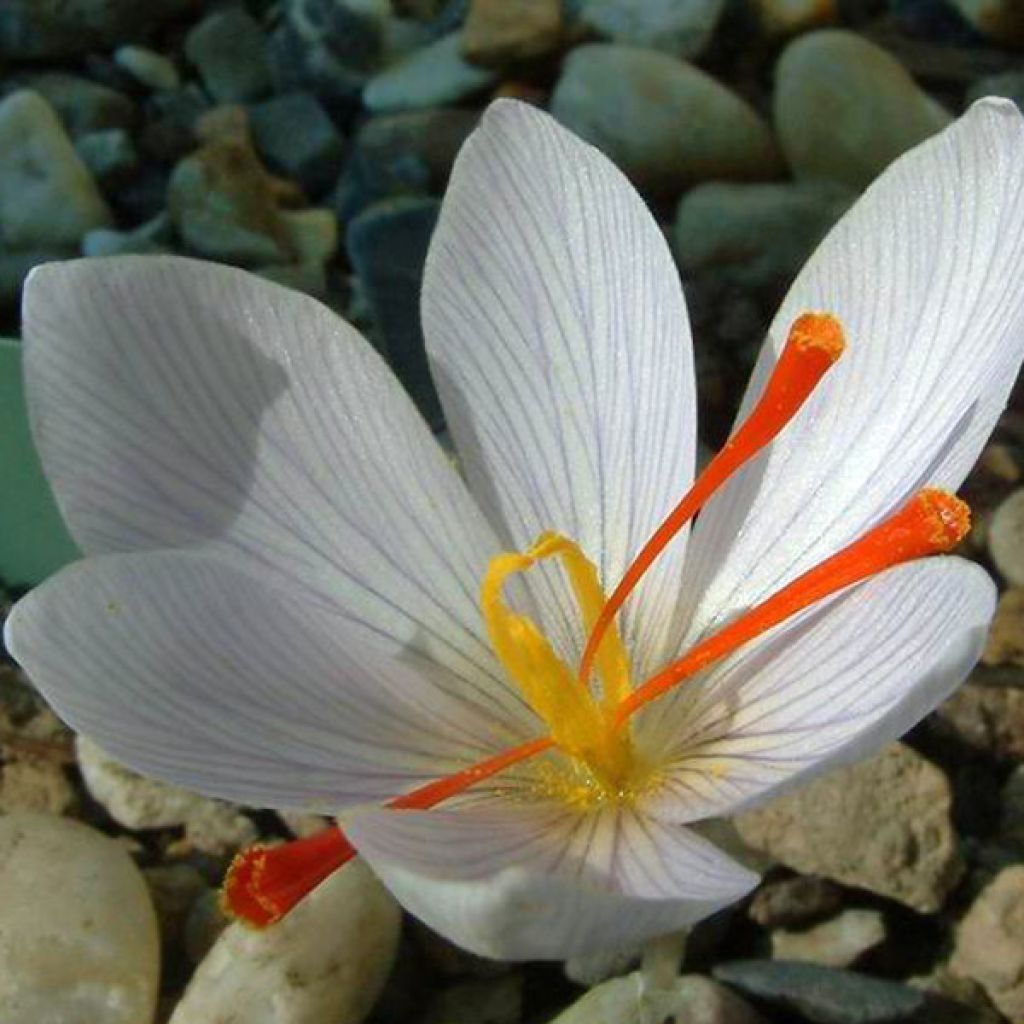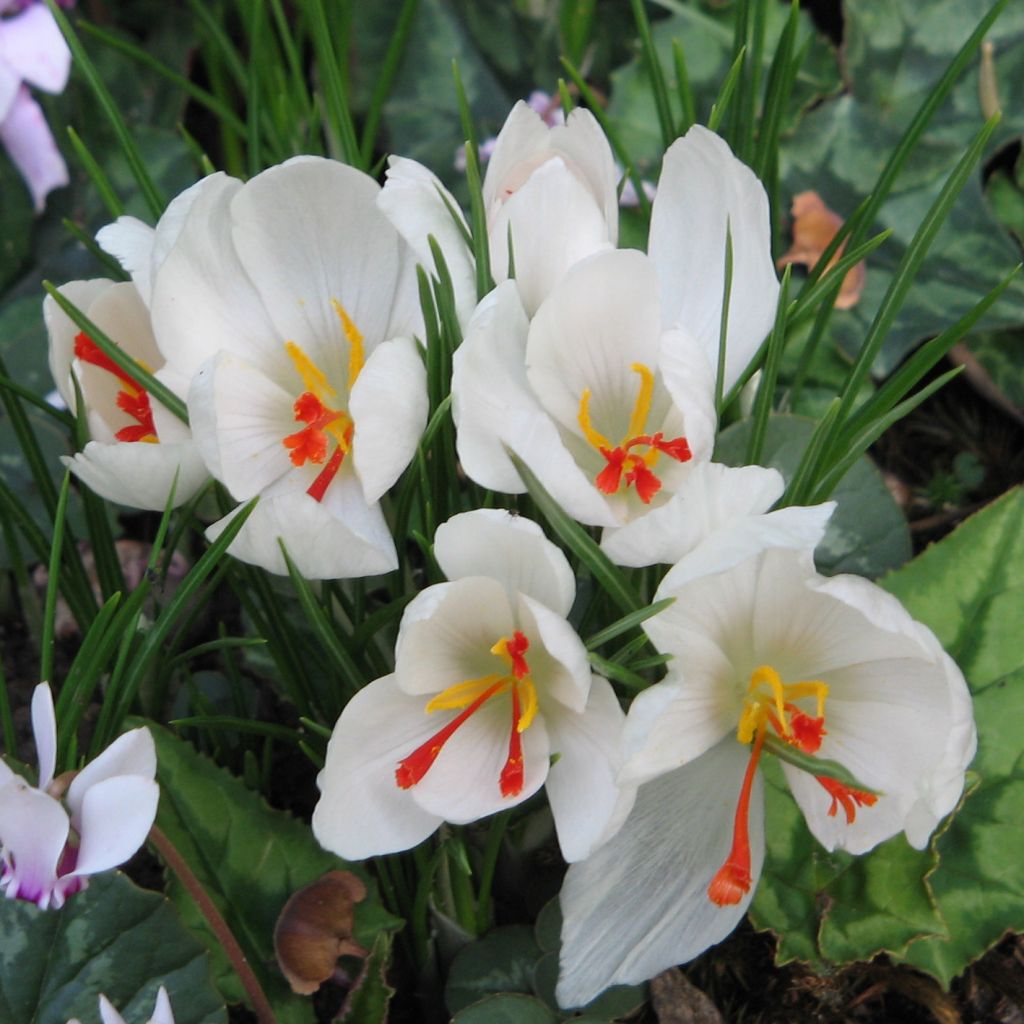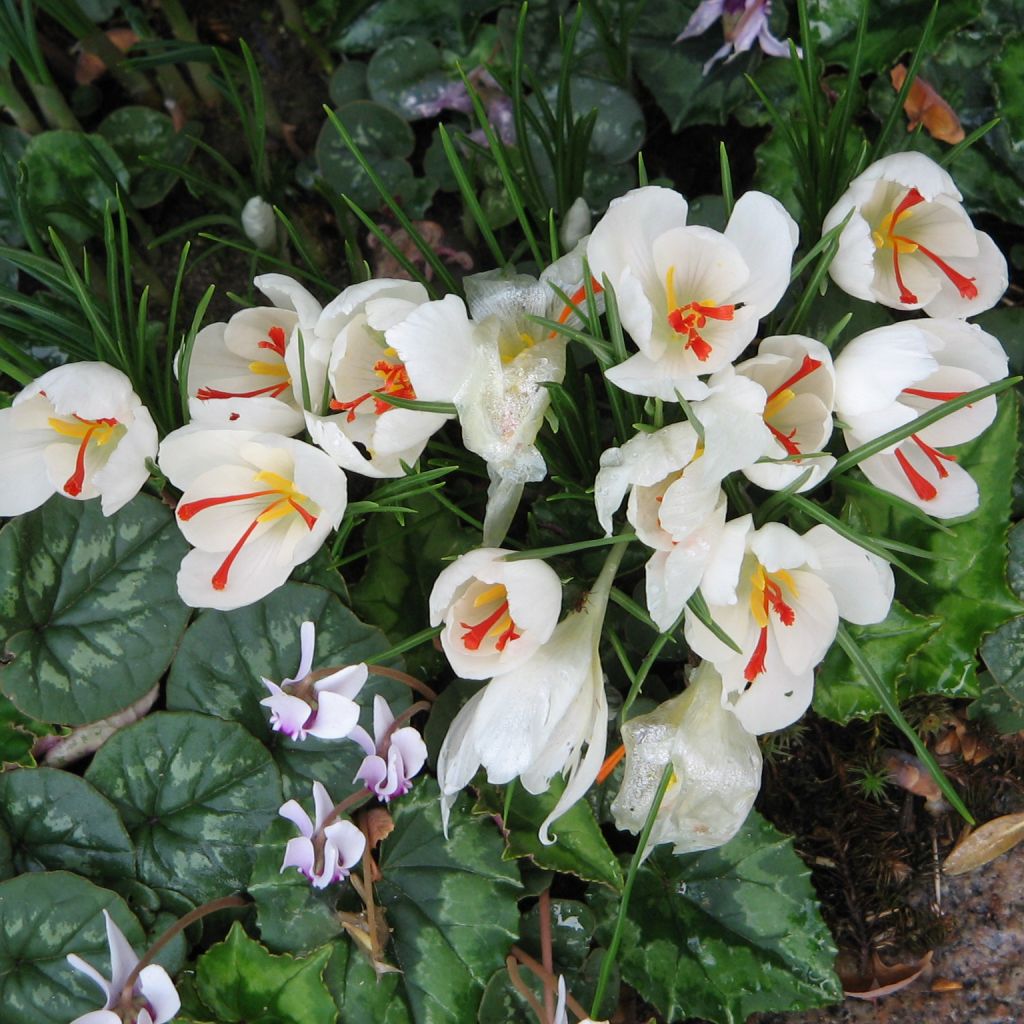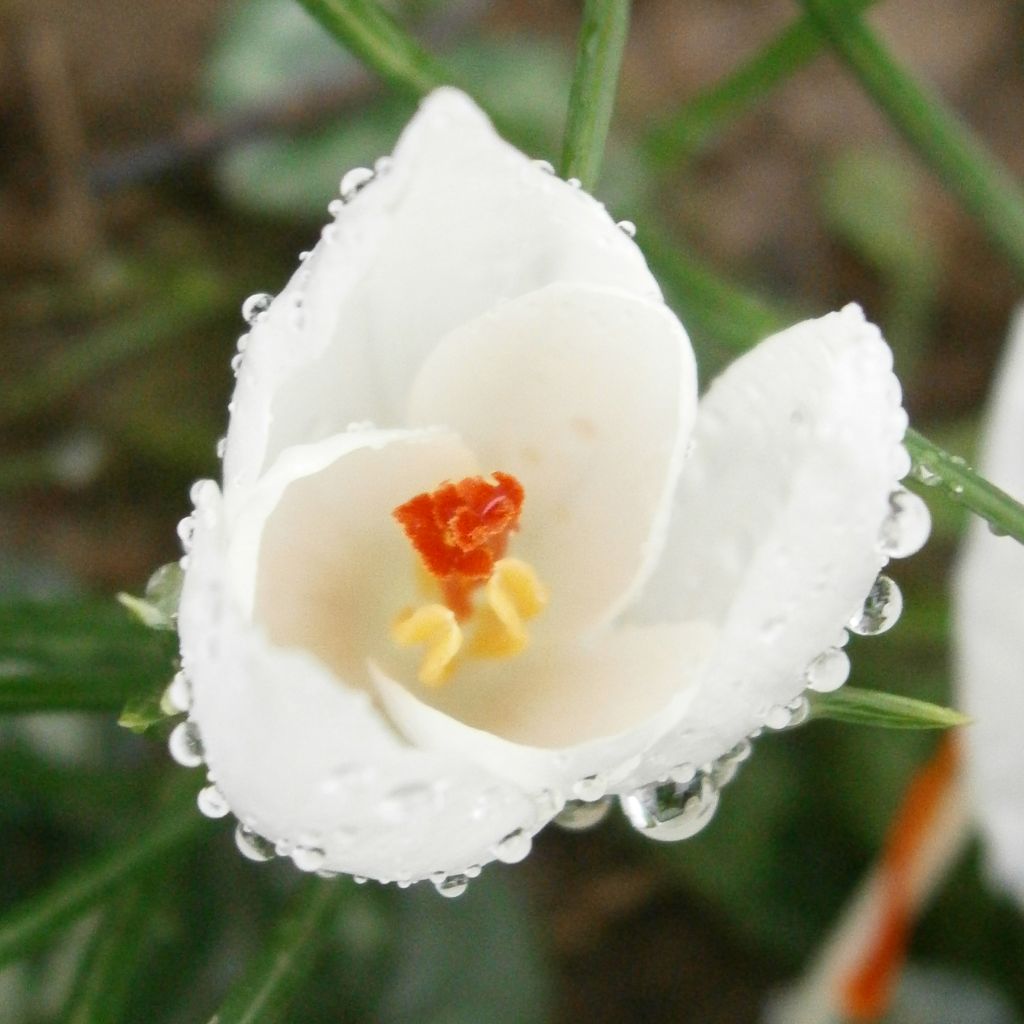

Crocus cartwrightianus Albus


Crocus cartwrightianus Albus


Crocus cartwrightianus Albus


Crocus cartwrightianus Albus
Crocus cartwrightianus Albus
Crocus cartwrightianus Albus
Cartwright's Crocus
This plant carries a 6 months recovery warranty
More information
We guarantee the quality of our plants for a full growing cycle, and will replace at our expense any plant that fails to recover under normal climatic and planting conditions.
From €5.90 for pickup delivery and €6.90 for home delivery
Express home delivery from €8.90.
From €5.90 for pickup delivery and €6.90 for home delivery
Express home delivery from €8.90.

Does this plant fit my garden?
Set up your Plantfit profile →
Description
Crocus cartwrightianus albus or White Saffron Crocus is a lovely hardy autumn perennial, less well known than its cousin sativus. In autumn, it produces large spectacular, beautiful pure white flowers that brighten up the garden. They measure about ten centimetres. Each bulb produces 1 to 3 flowers, whose 3 red-orange filaments are saffron.
The green leaves of Crocus cartwrightianus albus, which are 15 to 20 cm tall, mostly appear after flowering and dry up at the end of spring. The Crocus is used in gardens. It can be placed in a flower bed, border, rockery or even in pots. The Saffron Crocus is a rare species that originates from wild plants in Southern Europe and Asia Minor. Its flowers, unlike most species, remain open even in darkness.
For a saffron harvest, which is mainly produced in Iran, a daily harvest is required when the flowers have just opened as the flowers have a very short life (48 hours). Saffron can be used to spice up your dish. It takes 150 flowers to produce one gram of saffron.
Plant habit
Flowering
Foliage
Botanical data
Crocus
cartwrightianus
Albus
Iridaceae
Cartwright's Crocus
Cultivar or hybrid
Planting and care
Plant Crocus cartwirghtianus albus from summer for flowering in autumn (late October). The bulbs should be planted in a warm location, facing south or west, at a depth of 15 cm, in groups of 3 bulbs, with each bulb spaced 8 cm apart. They prefer well-drained soil that has been deeply worked and enriched. A sandy or clay-limestone soil that is not too wet will be perfect. If your soil is too heavy, simply incorporate sand or organic matter during planting. The plant does not need to be watered until the first leaves appear; the first cold weather will bring out the flowers. Leave it in place for several years to obtain beautiful flowers without any special care. This crocus prefers to be grown in groups. To obtain saffron, cut the "saffron stigmas" from your crocuses when each flower blooms, ideally at sunrise to preserve their taste, and let them dry, ideally for about twenty minutes in a slightly warm oven (60°): there's your saffron!
Planting period
Intended location
Care
-
, onOrder confirmed
Reply from on Promesse de fleurs
Haven't found what you were looking for?
Hardiness is the lowest winter temperature a plant can endure without suffering serious damage or even dying. However, hardiness is affected by location (a sheltered area, such as a patio), protection (winter cover) and soil type (hardiness is improved by well-drained soil).

Photo Sharing Terms & Conditions
In order to encourage gardeners to interact and share their experiences, Promesse de fleurs offers various media enabling content to be uploaded onto its Site - in particular via the ‘Photo sharing’ module.
The User agrees to refrain from:
- Posting any content that is illegal, prejudicial, insulting, racist, inciteful to hatred, revisionist, contrary to public decency, that infringes on privacy or on the privacy rights of third parties, in particular the publicity rights of persons and goods, intellectual property rights, or the right to privacy.
- Submitting content on behalf of a third party;
- Impersonate the identity of a third party and/or publish any personal information about a third party;
In general, the User undertakes to refrain from any unethical behaviour.
All Content (in particular text, comments, files, images, photos, videos, creative works, etc.), which may be subject to property or intellectual property rights, image or other private rights, shall remain the property of the User, subject to the limited rights granted by the terms of the licence granted by Promesse de fleurs as stated below. Users are at liberty to publish or not to publish such Content on the Site, notably via the ‘Photo Sharing’ facility, and accept that this Content shall be made public and freely accessible, notably on the Internet.
Users further acknowledge, undertake to have ,and guarantee that they hold all necessary rights and permissions to publish such material on the Site, in particular with regard to the legislation in force pertaining to any privacy, property, intellectual property, image, or contractual rights, or rights of any other nature. By publishing such Content on the Site, Users acknowledge accepting full liability as publishers of the Content within the meaning of the law, and grant Promesse de fleurs, free of charge, an inclusive, worldwide licence for the said Content for the entire duration of its publication, including all reproduction, representation, up/downloading, displaying, performing, transmission, and storage rights.
Users also grant permission for their name to be linked to the Content and accept that this link may not always be made available.
By engaging in posting material, Users consent to their Content becoming automatically accessible on the Internet, in particular on other sites and/or blogs and/or web pages of the Promesse de fleurs site, including in particular social pages and the Promesse de fleurs catalogue.
Users may secure the removal of entrusted content free of charge by issuing a simple request via our contact form.



































